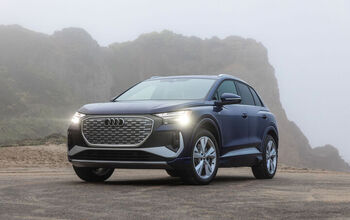Survey Examines Why Americans Drive Dangerously

With Memorial Day weekend around the corner, now is a good time to take a look at dangerous driving habits to look out for.
Envista Forensics recently surveyed 2,000 Americans who were willing to admit they recently behaved dangerously behind the wheel. The survey analyzed four types of dangerous driving: rushed, distracted, aggressive, and intoxicated. In addition, the study analyzed differences based on gender, age, and geography, revealing regional trends and what men and women are more likely to do while behind the wheel.
When it came to driving rushed, which includes speeding, changing lanes unsafely, and not obeying sign and lights, 48 percent of drivers said they didn’t want to look bad – like being late for a meeting. Thirty percent of drivers said they were generally impatient, while 21 percent said they didn’t want to lose an opportunity, such as missing a flight. The remaining one percent said they get a thrill from driving that way. Perhaps more concerning is that one in three drivers admitted there was no justifiable reason for driving rushed.
More than half of the drivers engaging in distracting activity, such as using the phone, eating, or putting on make up, said they didn’t think distracted driving is very dangerous. Of those surveyed, 36 percent said they kept it brief and that it wasn’t dangerous, while 22 percent claimed they had to do something that couldn’t wait. Another 22 percent admitted it was poor judgment, and the remaining 20 percent said they can multitask and drive safely.
SEE ALSO: Is Semi-Autonomous Car Technology Making Distracted Driving Worse?
For this survey, aggressive driving was defined as “driving unsafely when angered by other driver(s).” Like other actions often driven by emotions, 47 percent admitted it was just poor judgment and were remorseful above all else. One quarter of those surveyed said they wanted to teach the other driver(s) a lesson, while 16 percent wanted to get even. The remaining 12 percent said they wanted to intimidate the other driver(s).
Arguably the most dangerous of the four, drivers who admitted driving under the influence of drugs or alcohol had a few reasons to justify their behavior. Four out of 10 drivers said it was all about convenience, with 32 percent admitting it was just poor judgment. Another 29 percent claimed they could drive safely under the influence, while 20 percent said it was the only way to their destination. Twelve percent said it was the cheapest way to their destination, and the remaining eight percent justified it by saying it was the fastest way to their destination.
More than half of the drivers surveyed for each category of dangerous driving said they have tried to change their behavior and improved.
Looking at demographics, the study found women were more likely to feel remorse and cite poor judgment, be confronted about rushed driving, successfully change their behavior, and cite parents or family as an influence. Meanwhile, men were more likely to have false confidences in their abilities, be confronted about distracted, aggressive, or intoxicated driving, try but fail to change, and cite friends as an influence.
When it comes to different age groups, the survey found Millennials were five times more likely to cite ability to multitask safely than Boomers or Gen Xers. One in four Millennials had tried to change their dangerous behavior but failed, while Boomers were most likely to say they can drive safely while under the influence.
[Source: Envista Forensics]

Jason Siu began his career in automotive journalism in 2003 with Modified Magazine, a property previously held by VerticalScope. As the West Coast Editor, he played a pivotal role while also extending his expertise to Modified Luxury & Exotics and Modified Mustangs. Beyond his editorial work, Jason authored two notable Cartech books. His tenure at AutoGuide.com saw him immersed in the daily news cycle, yet his passion for hands-on evaluation led him to focus on testing and product reviews, offering well-rounded recommendations to AutoGuide readers. Currently, as the Content Director for VerticalScope, Jason spearheads the content strategy for an array of online publications, a role that has him at the helm of ensuring quality and consistency across the board.
More by Jason Siu































Comments
Join the conversation
The most common traffic ticket is speeding and the most common places those tickets are given is in speed traps where the posted limits are set less-safely and improperly 10 or more mph below the safest 85th percentile speed points. Example: If the slowest 85% of the cars are at or below 42 to 47 mph, then the safest limit to post is 45 for the smoothest traffic flow and the fewest crashes. Setting the limit at 40 is wrong but not terrible from a safety viewpoint. Setting it at 35 or lower is simply terrible engineering and sometimes a deliberate action to create for-profit speed trap enforcement that gives most tickets to the safest drivers on the road, the ones statistically least likely to be in a crash, the one at or very close to 45 mph. This type of racket is incredibly common, and totally despicable. James C. Walker, National Motorists Association
"Rushed" driving seems like an odd addition to the list of "distracted, aggressive and intoxicated". Studies have show that speed in #9 on the list of causes of accidents. So the survey is flawed if it includes speeding in the "rushed" list. Improper lane changes, ignoring signals or signs are very dangerous. but speed, by itself, is not. Speeding is easy to demonize, and people believe it. It's just not true.